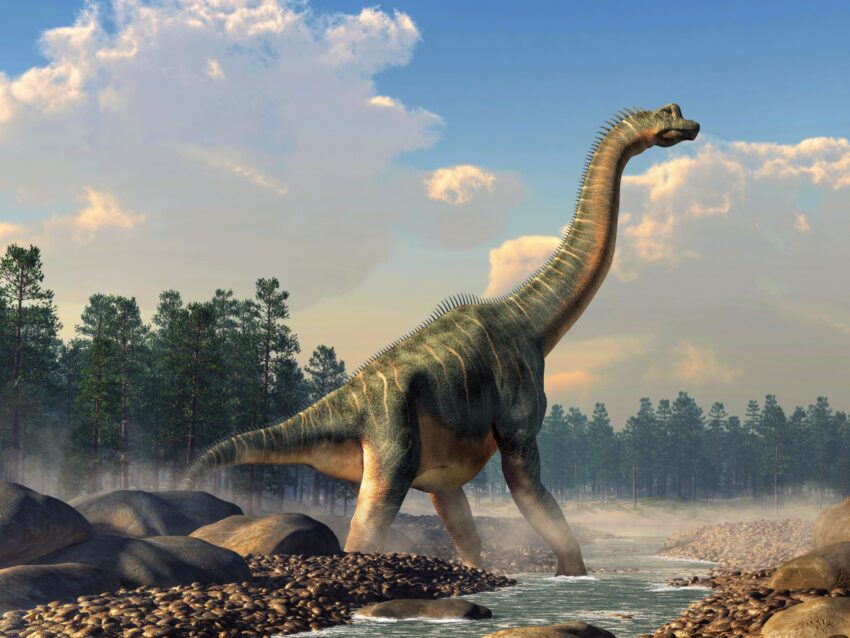The Apatosaurus, often overshadowed by its more famous cousin the Brachiosaurus or Brontosaurus, remains one of the most captivating dinosaurs in the prehistoric world. Known for its towering size, distinctive features, and the intriguing scientific debates surrounding its classification, the Apatosaurus offers a wealth of fascination for paleontologists, dinosaur enthusiasts, and casual observers alike. So, what exactly makes this long-necked, herbivorous giant so captivating? Let’s dive into the world of the Apatosaurus to uncover its many remarkable traits.
A Colossal Herbivore
The Apatosaurus, part of the Sauropod group of dinosaurs, was one of the largest creatures to ever roam the Earth during the Late Jurassic period, about 154 to 150 million years ago. Growing up to 75 feet in length and weighing as much as 20 to 30 tons, the sheer size of this dinosaur is awe-inspiring. Despite its massive bulk, the Apatosaurus was an herbivore, feeding on vegetation like conifers, ferns, and cycads, which were abundant during its time.
The sheer scale of the Apatosaurus makes it a living embodiment of the ancient “giants” of the Mesozoic era, capturing the imagination of anyone who learns about it.
Unique Physical Features
Unlike some of its relatives like the Brachiosaurus, the Apatosaurus had a relatively shorter neck and a more horizontal body. Its skull was relatively small compared to its body, with a long, whip-like tail that likely helped it maintain balance. One of the most distinguishing characteristics of the Apatosaurus is its relatively narrow, elongated body and large, powerful limbs that were adapted for supporting its heavy frame.
These adaptations enabled the Apatosaurus to cover vast distances in search of food, while also making it an effective forager across various terrains.
The Mystery of the “Brontosaurus” Confusion
The Apatosaurus’ fascinating history is also intertwined with one of the most enduring debates in paleontology. For many years, the Apatosaurus was mistakenly thought to be the same species as the Brontosaurus, another famous sauropod. For over a century, Brontosaurus was considered a distinct genus, even though paleontologists had suspected they were dealing with the same animal.
This revelation not only clarified the evolutionary relationship between these dinosaurs but also underscored the complexities of classification in paleontology. The Apatosaurus’ association with the Brontosaurus only enhances its mystique, illustrating how much there is still to discover about ancient life.
The Apatosaurus in Popular Culture
The Apatosaurus has made numerous appearances in popular culture, though often under the wrong name. In many films, books, and even animated TV shows, the Apatosaurus is mistakenly labeled as a Brontosaurus, or sometimes even more generically as a “long-necked dinosaur.”In this animated movie, the protagonist is an Apatosaurus named Arlo, who embarks on a journey of self-discovery, embodying the gentle and peaceful nature often attributed to this species.
Though the portrayal in media might not always be scientifically accurate, these representations help keep the Apatosaurus alive in the public imagination and contribute to its enduring charm.
The Ecological Role of the Apatosaurus
The Apatosaurus, like many sauropods, played a crucial role in the ecosystems of the Late Jurassic. As one of the largest herbivores of its time, it would have been an important part of the food chain,but also in terms of its impact on vegetation. By consuming vast amounts of plant life, the Apatosaurus helped to shape the landscape, preventing the overgrowth of certain plants and promoting biodiversity.
Its size would have made it relatively safe from all but the most aggressive predators, forested environments that characterized much of the Late Jurassic period.
Ongoing Research and Discoveries
While much is known about the Apatosaurus, ongoing research continues to reveal new insights. Fossils of this dinosaur have been uncovered in the United States, particularly in the Morrison Formation, which is a rich source of dinosaur fossils from the Jurassic period.
For instance, paleontologists have recently made strides in understanding the biomechanics of sauropods like the Apatosaurus.
Conclusion
From its colossal size and unique features to its place in paleontological history and its role in popular culture, the Apatosaurus holds an enduring fascination for people of all ages. Whether you’re a budding paleontologist, a dinosaur enthusiast, or simply someone captivated by the wonders of the natural world, the Apatosaurus remains a symbol of the ancient giants that once roamed our planet.
Though it may not have the same level of fame as some of its contemporaries, the Apatosaurus’ intriguing history, mysterious classification, and remarkable biology ensure that it will continue to be a subject of interest and wonder for generations to come.For more information click the link https://dinorepeat.com/

